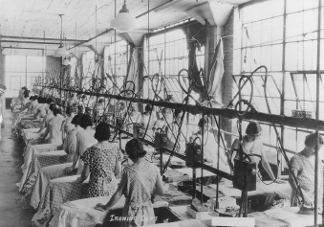WATSON, WILBUR J. (5 Apr. 1871-22 May 1939), a civil engineer, especially eminent in bridge design, was born in BEREA to David R. and Maria (Parker) Watson. Receiving his B.S. from the Case School of Engineering, Watson developed a carefully stated philosophy of the relationship between engineering and aesthetics and used structural and reinforced concrete to produce some of the most beautiful BRIDGES in northern Ohio. He helped set standards for bridge construction across the country. While employed by OSBORN ENGINEERING CO. in Cleveland, Watson was designing bridges as early as 1898. Marrying Harriett Martha Barnes in 1900, Watson founded his own firm, Wilbur J. Watson & Associates, in 1907. His achievements include recognizing the possibility of using precast concrete beams for bridges (1908); the pioneer design of steel centering for erecting concrete bridges (Rocky River Bridge, 1910); early experiments with mushroom-and-slab floor construction (1911); the design of the Howard St. Bridge in Akron, highest bridge of its kind in 1912; concrete bridges for the Cleveland & Youngstown Railroad (SHAKER HEIGHTS RAPID TRANSIT) (1916); construction of the unique Akron Goodyear Zeppelin Airdock (1929) covering 8 & one half acres, the largest uninterrupted interior space in the world; engineering the Lorain-Carnegie (1932) and Main Ave. (1939) bridges in Cleveland; and the bascule bridge in Lorain (1940). His publications included Bridge Architecture (1927), A Decade of Bridges: 1926-1936 (1937), and Bridges in History and Legend (1937), the latter written with his daughters Sara Ruth and Emily.
Last Modified: 23 Jul 1997 11:03:53 AM- Related Article(s)









